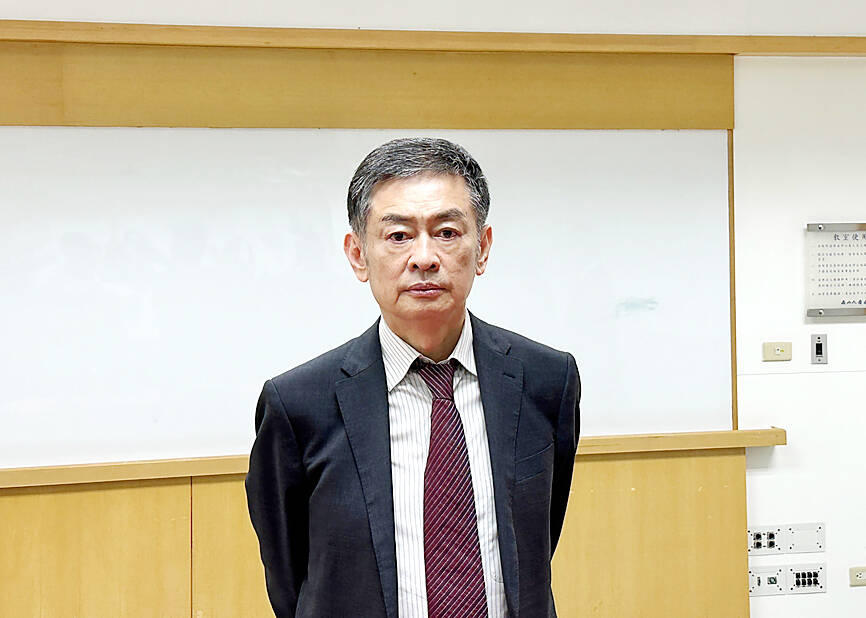Largan Precision Co (大立光), a major camera lens supplier for Apple Inc’s iPhones, yesterday posted 21.7 percent annual growth in net profit for last quarter and said it expects factories to be fully utilized in the second half of the year, given demand for increasingly complex manufacturing processes.
Net profit rose to NT$4.5 billion (US$138.4 million) last quarter, compared with NT$3.7 billion in the second quarter of last year. However, on a quarterly basis, net profit plummeted 26.35 percent from NT$6.11 billion. That brought first-half net profits to NT$10.61 billion, up 51.79 percent from a year ago.
Earnings per share jumped to NT$79.49 from NT$52.33 in the same period last year.

Photo: CNA
Largan said most of its factories would run at full capacity in the third and fourth quarters, as it has to boost inventories for customers.
Revenue would grow sequentially this month and next month, Largan CEO Adam Lin (林恩平) told an online investors’ conference yesterday.
However, visibility for September is vague, he said, but added that yields should improve further.
That would set the scene for Largan to see a pickup in gross margin this quarter, from 48.41 percent last quarter, the lowest in the past three quarters, as utilization, yields and product mix are deciding factors.
However, Largan said it remained conservative about the sales outlook for smartphones in the second half.
The issue would be more on end consumers’ willingness to spend on phones, as phone makers have learned to manage inventory prudently, Lin said.
“Nobody feels optimistic. Most cellphone brand names do not expect sales to be strong. Customers are not hopeful about good sales,” Lin said. “They anticipate smartphones with artificial intelligence [AI] features might sell better. But that is just their anticipation.”
Some customers are slowing down equipping new phones with AI features, as component costs are inflated, he said, adding that customers are reluctant to upgrade camera lenses.
Most customers are upgrading camera lenses to adopt eight pieces of plastic lenses and very few have adopted hybrid lenses, which are plastic and glass lenses together, Lin said.
Additionally, clamshell phones tend to use fewer lenses, but those lenses are usually thinner and require a higher technology threshold, Lin said, implying that those camera lenses deliver better average selling prices and gross margin.
Asked if Largan has secured long-term supply agreements with its key customers, Lin said: “It is nothing special. We usually discuss with customers about the volume for next year in order to prepare our capacity, since most of Largan’s products are customized.”
Speculation swirled on Wednesday that Largan had landed a long-term agreement with Apple due to its strong intellectual property portfolio.
It is very rare for Apple to sign long-term supply contracts with its component suppliers.
Asked about capacity expansion, Largan said it plans to move in new equipment to a new factory this quarter, which would quickly be fully utilized in the fourth quarter. The company is planning to build another new factory with twice the floor size of the last one.
The new fab would be ready in the third quarter next year, Lin said.

Nvidia Corp’s demand for advanced packaging from Taiwan Semiconductor Manufacturing Co (TSMC, 台積電) remains strong though the kind of technology it needs is changing, Nvidia CEO Jensen Huang (黃仁勳) said yesterday, after he was asked whether the company was cutting orders. Nvidia’s most advanced artificial intelligence (AI) chip, Blackwell, consists of multiple chips glued together using a complex chip-on-wafer-on-substrate (CoWoS) advanced packaging technology offered by TSMC, Nvidia’s main contract chipmaker. “As we move into Blackwell, we will use largely CoWoS-L. Of course, we’re still manufacturing Hopper, and Hopper will use CowoS-S. We will also transition the CoWoS-S capacity to CoWos-L,” Huang said

Nvidia Corp CEO Jensen Huang (黃仁勳) is expected to miss the inauguration of US president-elect Donald Trump on Monday, bucking a trend among high-profile US technology leaders. Huang is visiting East Asia this week, as he typically does around the time of the Lunar New Year, a person familiar with the situation said. He has never previously attended a US presidential inauguration, said the person, who asked not to be identified, because the plans have not been announced. That makes Nvidia an exception among the most valuable technology companies, most of which are sending cofounders or CEOs to the event. That includes

TARIFF TRADE-OFF: Machinery exports to China dropped after Beijing ended its tariff reductions in June, while potential new tariffs fueled ‘front-loaded’ orders to the US The nation’s machinery exports to the US amounted to US$7.19 billion last year, surpassing the US$6.86 billion to China to become the largest export destination for the local machinery industry, the Taiwan Association of Machinery Industry (TAMI, 台灣機械公會) said in a report on Jan. 10. It came as some manufacturers brought forward or “front-loaded” US-bound shipments as required by customers ahead of potential tariffs imposed by the new US administration, the association said. During his campaign, US president-elect Donald Trump threatened tariffs of as high as 60 percent on Chinese goods and 10 percent to 20 percent on imports from other countries.

INDUSTRY LEADER: TSMC aims to continue outperforming the industry’s growth and makes 2025 another strong growth year, chairman and CEO C.C. Wei says Taiwan Semiconductor Manufacturing Co (TSMC, 台積電), a major chip supplier to Nvidia Corp and Apple Inc, yesterday said it aims to grow revenue by about 25 percent this year, driven by robust demand for artificial intelligence (AI) chips. That means TSMC would continue to outpace the foundry industry’s 10 percent annual growth this year based on the chipmaker’s estimate. The chipmaker expects revenue from AI-related chips to double this year, extending a three-fold increase last year. The growth would quicken over the next five years at a compound annual growth rate of 45 percent, fueled by strong demand for the high-performance computing